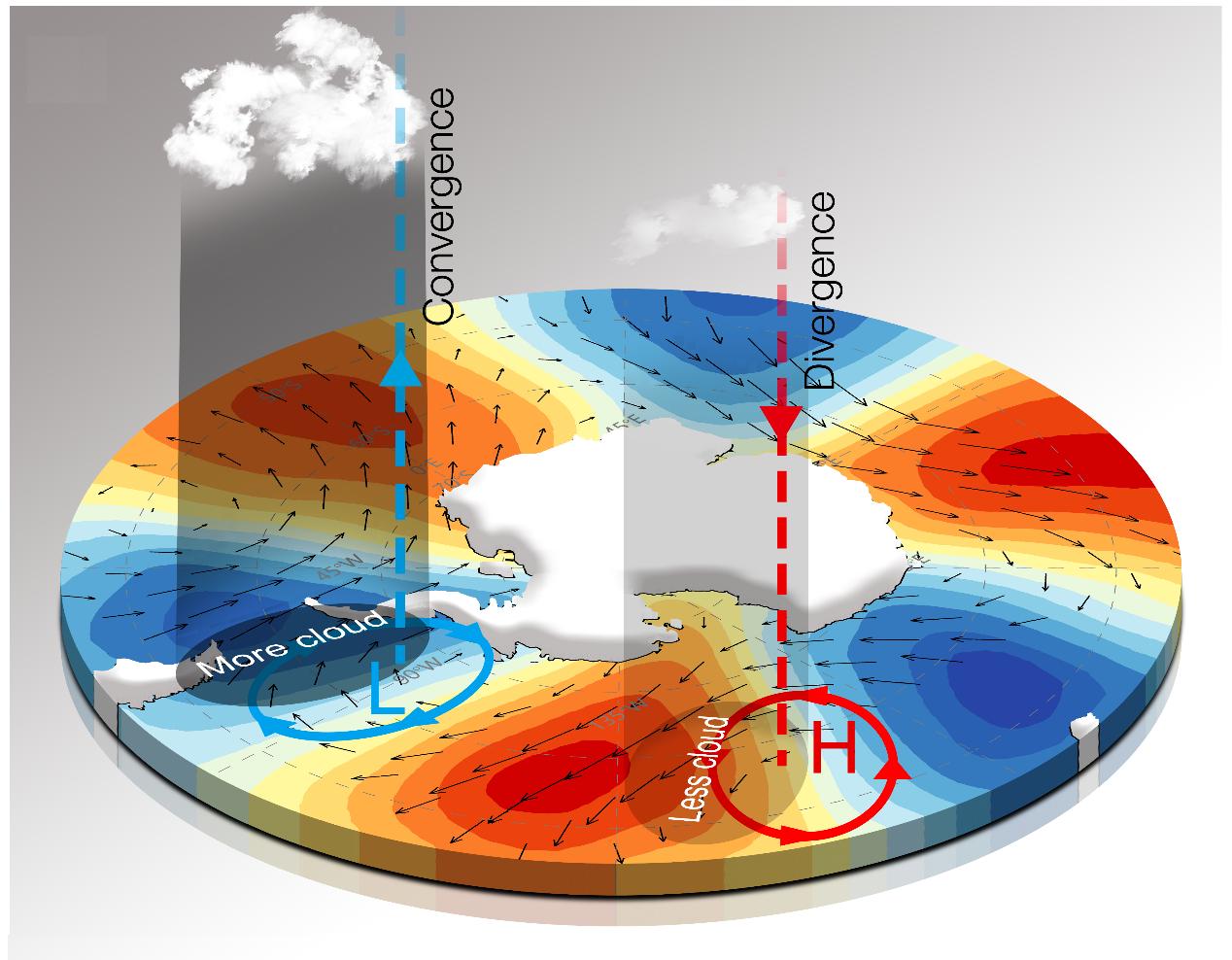Clouds play a critical role in the global climate system because they influence the radiation balance. The unique Antarctic environment, with extremely low temperature, low moisture, and low aerosol concentration, makes cloud formation different from that in the other regions, including the Arctic.
However, current state-of-the-art climate models have tremendous inter-model discrepancies in cloud simulations, reflected by their annual and seasonal means of total cloud fractions. The lack of knowledge of cloud processes in the extreme polar environment introduces errors in simulations of the atmosphere and sea ice interaction in climate models.
Recently, the research team led by Dr. BI Haibo and WANG Yunhe of Institute of Oceanology, Chinese Academy of Sciences (IOCAS), found a coupled mode of cloud, atmospheric circulation, and sea ice controlled by wave-3 pattern in Antarctic winter.
The study was published in Environmental Research Letters.
Researchers found a well-defined coupled mode associated with the wave-3 pattern in winter Antarctic atmospheric circulation, cloud, and sea ice. In the coupled mode, both horizontal and vertical moisture transports contribute to the cloud's wave-3 distribution at mid-level of the troposphere, indicating that the moisture sources of cloud come from both local and remote regions. The sea ice variability in winter is driven by both low-level atmospheric circulation and cloud radiative forcing related to the wave-3 pattern.
The atmospheric circulation controls mid-level cloud distribution. In turn, cloud radiative forcing further strengthens the sea ice anomalies generated by the low-level atmospheric circulation.
However, the leading low-level cloud mode dominated by orography effects and atmospheric circulation anomalies does not match the wave-3 pattern, of which the radiative forcing on sea ice is suppressed by the direct dynamic and thermodynamic forcing of the circulation.
The cloud radiative forcing can contribute -15 W m-2 to the surface radiation budget in the Amundsen Sea in August 2018, producing up to -12-cm SIT anomalies, which accounts for approximately 20% of SIT total anomaly.
These discoveries provide a better understanding of Antarctica's interactive processes, and also offer physical evidence for climate model validations.
This study was supported by the National Natural Science Foundation of China.

A schematic circulation to illustrate the cloud formation
Yunhe Wang, Xiaojun Yuan*, Mark A. Cane. A coupled mode of cloud, atmospheric circulation, and sea ice controlled by wave-3 pattern in Antarctic winter. Environmental Research Letters. 2022. https://iopscience.iop.org/article/10.1088/1748-9326/ac5272
Yunhe Wang, Xiaojun Yuan, Haibo Bi*, Yu Liang, Haijun Huang*, Zehua Zhang, and Yanxia Liu. The Contributions of Winter Cloud Anomalies in 2011 to the Summer Sea-Ice Rebound in 2012 in the Antarctic. Journal of Geophysical Research: Atmospheres, 2019, 124: 3435-3447. https://agupubs.onlinelibrary.wiley.com/doi/10.1029/2018JD029435
WANG Yunhe
Institute of Oceanology
E-mail: wangyunhe@qdio.ac.cn
(Editor: ZHANG Yiyi)
|
|

Address: 7 Nanhai Road, Qingdao, Shandong 266071, China
Tel: 86-532-82898902 Fax: 86-532-82898612 E-mail: iocas@qdio.ac.cn


